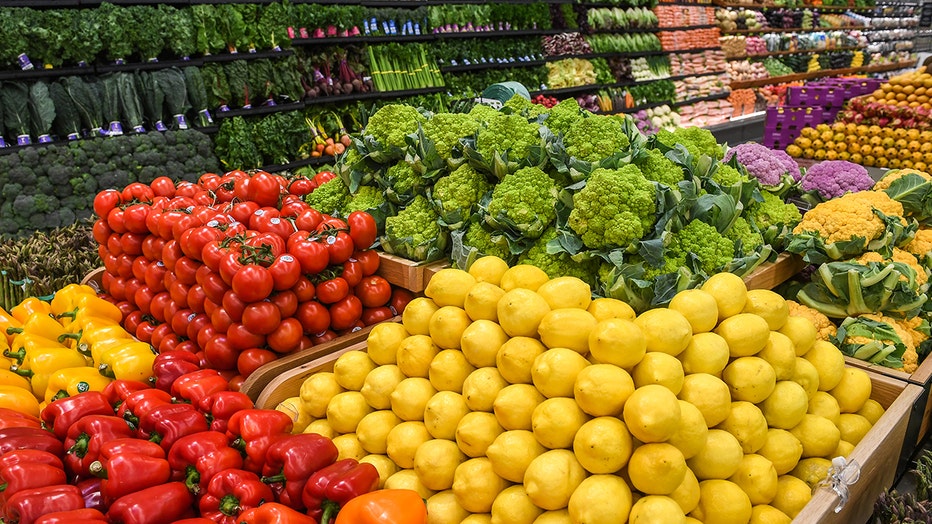List: These are the groceries that have increased in price the most
Will new tariffs impact the seafood industry?
Many industries have questioned the potential impact of new tariffs announced earlier in the week by President Donald Trump. Justin and Travis Maderia, the co-founders of Lobster Boys joined LiveNOW from FOX's Christy Matino with their thoughts.
A new analysis reveals that many grocery items are higher than a year ago, underscoring the impact on ongoing inflation.
Researchers at LendingTree compared retail prices provided by the U.S. Department of Agriculture (USDA) in January 2024 and January 2025 for 68 fruit and vegetable items that had prices available for organic and conventional versions.
Study finds avocado prices increase most
By the numbers:
The analysis, published on Monday, found that conventional prices rose an average of 2.5% between January 2024 and January 2025, while organic prices rose 2.4%.
For conventional items, large Hass avocados rose by a significant 75.4% — the biggest price hike across all the produce examined. Meanwhile, extra-large Hass avocados ranked third with a price increase of 38.2%. Collards (42.9%) ranked second.

Commack, N.Y.: Vegetables are stacked neatly inside the produce area as employees prepare for the grand opening of Whole Foods Market in Commack, New York on April 2, 2019. (Credit: Steve Pfost/Newsday RM via Getty Images)
The analysis also found that the price also depended on the amount a person bought. While prices for a three-pound bag of organic Gala/Royal Gala apples rose by 50.5%, the two-pound bag fell by 15.7% and the per-pound price by 10.2%. Similarly, a four-pound bag of organic navel oranges saw prices rise by 48.2%, but the per-pound price rose by 24.7% and the three-pound bag fell by 9.5%.
Generally speaking, LendingTree said buying in bulk can help a person save, though it largely depends on the item.
Conventional fruits and vegetables with biggest price increases
Orgranic costs significantly more than conventional
By the numbers:
The study also found that organic fruits and vegetables can get pricey, costing an average of 52.6% more than their conventional produce counterparts.
What they're saying:
"We’ve come to expect organic fruits and veggies to cost more, but paying a 50.0% premium can be pretty hard to swallow," Matt Schulz, a LendingTree chief consumer analyst, said in a statement. "When stubborn inflation is making everything else more costly and shrinking people’s financial wiggle room, paying extra for fruits and vegetables may prove a bridge too far."
RELATED: These states spend the most on groceries: How does your bill compare?
The data found that the discrepancy was largest for iceberg lettuce, with consumers paying 179.3% more for the organic version. While conventional iceberg lettuce costs $1.21, organic lettuce costs $3.38.
The next biggest discrepancies were with Brussels sprouts and Granny Smith apples.
Tariffs could impact grocery items
Dig deeper:
The price of everyday goods such as groceries has increased significantly over the last several years and is predicted to worsen amid the ongoing trade war.
President Donald Trump has argued that tariffs will protect U.S. industries from unfair foreign competition and raise money for the federal government, but much of what Americans buy today relies on the global supply chain.
Steeper tariffs will likely impact fruits and vegetables, along with other products. The timing of when prices will go up comes down to inventory, one expert told The Associated Press.
The Source: The information for this story was provided by a LendingTree analysis, published on April 7, 2025. Researchers compared retail prices provided by the U.S. Department of Agriculture (USDA) for the weeks ending Jan. 26, 2024, and Jan. 31, 2025, for the 68 fruit and vegetable items (including their unit sizes) that had prices available for organic and conventional versions during both weeks.

